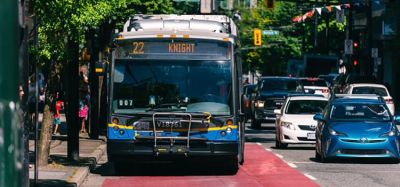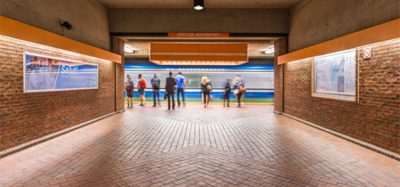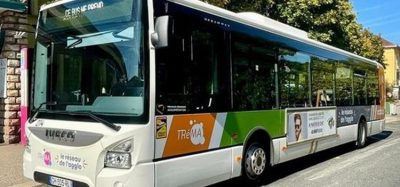Current and future position of public transport in the Czech Republic
- Like
- Digg
- Del
- Tumblr
- VKontakte
- Buffer
- Love This
- Odnoklassniki
- Meneame
- Blogger
- Amazon
- Yahoo Mail
- Gmail
- AOL
- Newsvine
- HackerNews
- Evernote
- MySpace
- Mail.ru
- Viadeo
- Line
- Comments
- Yummly
- SMS
- Viber
- Telegram
- Subscribe
- Skype
- Facebook Messenger
- Kakao
- LiveJournal
- Yammer
- Edgar
- Fintel
- Mix
- Instapaper
- Copy Link
Posted: 22 January 2013 | Pavel Dobeš, Former Minister of Transport, Czech Republic | No comments yet
Urban public transport systems have a long tradition in the Czech Republic and are well-known operational networks, especially in our large cities. Public transport systems can currently be found in more than 100 different sized cities in the Czech Republic, ranging from our smallest where there is often only one bus line in operation; providing a link between the main residential areas of the city and places of basic services such as schools, offices, medical facilities, shops, etc., up to our large cities where bus networks operate along with trolleybus networks, trams and, in the case of Prague, metro networks.
Public transport in the Czech Republic is operated under the conditions of transportation companies which are set-up and owned by the cities. Although urban public transport development projects are extremely expensive, improvements in this area during the last 15 years have been significant. Of particular importance is the project to gradually replace all aging vehicles with new, modern and more environmentallyfriendly vehicles which meet the standards and requirements of passengers. Strong emphasis is placed on providing vehicles that can easily transport people with reduced mobility.
Urban public transport systems have a long tradition in the Czech Republic and are well-known operational networks, especially in our large cities. Public transport systems can currently be found in more than 100 different sized cities in the Czech Republic, ranging from our smallest where there is often only one bus line in operation; providing a link between the main residential areas of the city and places of basic services such as schools, offices, medical facilities, shops, etc., up to our large cities where bus networks operate along with trolleybus networks, trams and, in the case of Prague, metro networks. Public transport in the Czech Republic is operated under the conditions of transportation companies which are set-up and owned by the cities. Although urban public transport development projects are extremely expensive, improvements in this area during the last 15 years have been significant. Of particular importance is the project to gradually replace all aging vehicles with new, modern and more environmentallyfriendly vehicles which meet the standards and requirements of passengers. Strong emphasis is placed on providing vehicles that can easily transport people with reduced mobility.
Urban public transport systems have a long tradition in the Czech Republic and are well-known operational networks, especially in our large cities. Public transport systems can currently be found in more than 100 different sized cities in the Czech Republic, ranging from our smallest where there is often only one bus line in operation; providing a link between the main residential areas of the city and places of basic services such as schools, offices, medical facilities, shops, etc., up to our large cities where bus networks operate along with trolleybus networks, trams and, in the case of Prague, metro networks.
Public transport in the Czech Republic is operated under the conditions of transportation companies which are set-up and owned by the cities. Although urban public transport development projects are extremely expensive, improvements in this area during the last 15 years have been significant. Of particular importance is the project to gradually replace all aging vehicles with new, modern and more environmentallyfriendly vehicles which meet the standards and requirements of passengers. Strong emphasis is placed on providing vehicles that can easily transport people with reduced mobility. We have also seen huge progress in the development of public information systems, clearance systems for passengers, and the construction of public transport terminals which are often located at new and more suitable locations corresponding to the current needs of passengers. This progress is in connection with significant development of integrated transport systems, which has been influenced by the process of residential and nonresidential suburbanisation in the transformation period of the Czech economy. This type of suburbanisation generated increased demands on the transport needs of passengers between the city and their place of employment. In many cases, the development of the public transport system is closely linked with the suburban lines in the regional transportation system. Within this system the same tariffs and organisational conditions can be applied.
Support of public transport networks in urban areas is also related to the rapid development of individual car transportation, which causes many problems in urban centers – both congestion and parking problems. However, individual passenger transport may also work as part of a multimodal transport – we can find the solution either in the terminals of public transport or in Park and Ride concepts. These solutions are most commonly located in suburban areas connected with city public transport lines and urban and suburban rail.
In the future we expect to see a gradual reduction of private car journeys being made into the central parts of our cities, because we aim to emphasise and strengthen the role of public transport. This trend implies the growing demands for this type of transport. In the process of creating transport solutions, constructing interchanges and in selecting appropriate vehicles we have to ensure that the quality of our public services is adequate, especially in the area of accessibility. It should be noted that in the context of demographic changes in Central and Western Europe, the number of older people with limited mobility will increase so we will have to adapt transport modes to cater for these conditions.
A specific example of a functional urban transport system is the Prague metropolitan region, which in recent decades passed dynamic development of residential, demographic, economic and transport structure. The gradual development of the Prague Integrated Transport (PID) system to its present appearance brought with it an increase in traffic, which reacts to the significant increase of the everyday needs of the population. An integral part of PID is a quality urban public transport system. This system, in comparison to other European capitals, is placed in various pools, which compare quality, price and availability of space, on the top rungs of ladder. Three metro lines, 30 tram lines, 130 bus routes and five ferries are currently operated by Prague public transport. For Prague to be connected with suburban and regional areas it is also possible to use more than 150 bus lines and 20 commuter rail lines. All of this is in acceptance of one common tariff and one contract carriage. In the context of the future development of public transport in Prague, the completion of metro line A and the start of construction of the new metro line D is seen as a priority. The urban and suburban railways have significant potential but it is necessary to complete the new stops and terminals in the city, as well as much needed infrastructure in suburban areas.
Related topics
Business Models, Infrastructure & Urban Planning, Multimodality
Issue
Issue 6 2012
Related cities
Czech Republic








